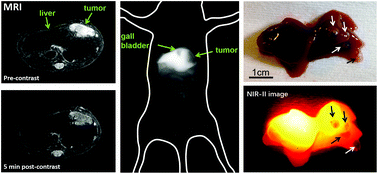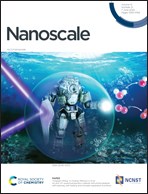An NIR-II/MR dual modal nanoprobe for liver cancer imaging
Abstract
Hepatocellular carcinoma (HCC) is a malignancy of the liver worldwide and surgical resection remains the most effective treatment. However, it is still a great challenge to locate small lesions and define the border of diffused HCC even with the help of preoperative imaging examination. Here, we reported a rare-earth-doped nanoparticle NaGdF4:Nd 5%@NaGdF4@Lips (named Gd-REs@Lips), which simultaneously performed powerful functions in both magnetic resonance imaging (MRI) and second near-infrared fluorescence window imaging (NIR-II, 1000–1700 nm). Imaging studies on orthotopic models with xenografts established from HCC patients indicated that Gd-REs@Lips efficiently worked as a T2-weighted imaging contrast agent to increase the signal intensity difference between liver cancer tissues and surrounding normal liver tissues on MRI, and it can also serve as a negative NIR-II imaging contrast enabling the precise detection of liver cancer. More importantly, benefiting from the high sensitivity of NIR-II imaging, Gd-REs@Lips allowed the visualization of tiny metastasis lesions (2 mm) on the liver surface. It is expected that the dual NIR-II/MRI modal nanoprobe developed holds high potential to fill the gap between the preoperative imaging detection of cancer lesions and intra-operative guidance, and it further brings new opportunities to address HCC-related medical challenges.



 Please wait while we load your content...
Please wait while we load your content...